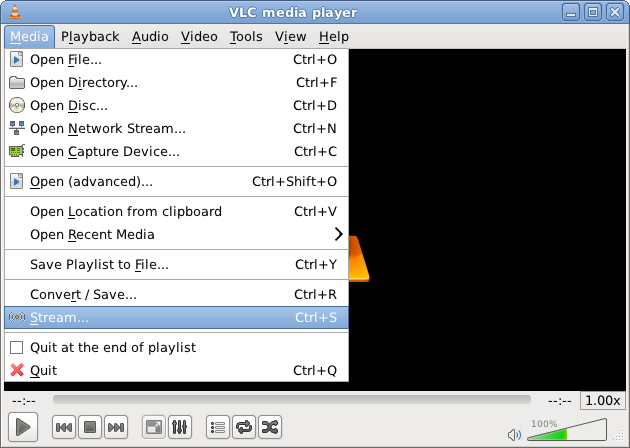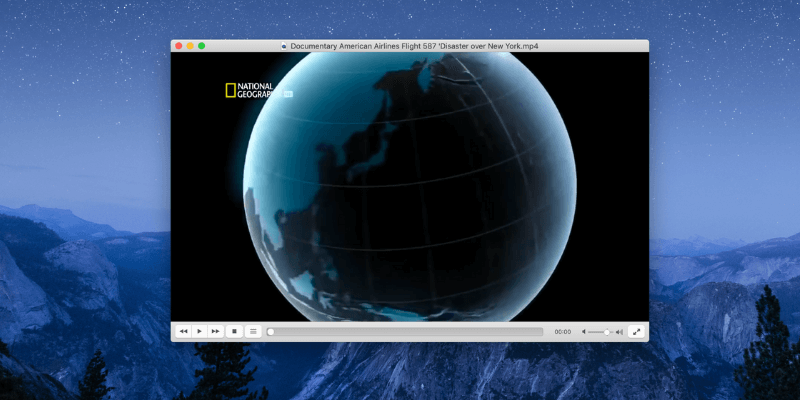Setting VLC as the Default Player (MAC) In MAC, you don’t necessarily have to open VLC to set it to default. You can just do this by accessing any random media file. Download the latest version of VLC Media Player for Mac - Popular multimedia player. Read 1169 user reviews of VLC Media Player on MacUpdate.
- Make Vlc Default Player
- Vlc Media Player Mac Pro
- Make Vlc Default Video Player Mac
- Make Vlc Default Player Mac
- Vlc Default Player On Mac
| This page describes how to make VLC the default media player. | Other 'how to' pages |
- 1Windows
- 3Linux
- 3.1Fedora
- 3.1.1GNOME
- 3.1Fedora
Windows
- See also: How to associate media files with VLC.
XP
The simplest way to set VLC as the default media player for Windows is during installation of VLC. During set-up, VLC will ask you if you want to associate certain media file types (such as .mp3, .flv, .wav) with VLC; for each 'association' chosen opening that file type will launch it in VLC. By default, all are selected, though you might (or might not) want to un-check file types you'd like to open with another programme.
Make Vlc Default Player
If you've missed this chance at making it the default media player during set-up, perhaps the easiest way is to un-install it and then install it again.
A word of caution regarding re-installation—be sure to un-check the box that deletes your preferences and cache, or all your customisations will be gone!
Vista, 7, 8
Open VLC player, click on Tools in the menu, and from there select Preferences.
Click on the Interface button on the left panel and then click on Set up associations... (it's close to the bottom).
Select types of files from the list that appears. Check any file types for which you want VLC to be the default player, or just check the select all option.
Mac
Right-click on the type of file you want to always open with VLC. Click 'Get Info'. In the 'Open With' section, select VLC from the drop-down menu. To apply this change to all files of this type, click the 'Change All' button.
For optical media, like CDs or DVDs, go to Apple -> System Preferences and choose 'CDs/DVDs' in the Hardware section. Choose 'Other Application' from the respective popup menu button. The list is alphabetical, so VLC should be near the bottom of the list.
Linux
Fedora
GNOME
Gnome uses two lists (located at /usr/share/applications/) – mimeinfo.cache and defaults.list – to register applications to file types.
You can either edit these manually or use the tools that GNOME has for this.
Instructions on how to do it in GNOME
Changing the default application for videos using menus (the easy way):
Using Nautilus 2.30.1, from the top menu bar choose 'Places', then Home Folder -> Edit menu -> Preferences -> choose Media tab -> and in the drop-down list next to 'DVD Video' choose 'Open VLC media player'.
Voilà.
Alternatively, try: System -> Preferences -> Personal -> Preferred Applications -> Multimedia -> Custom -> Type this: vlc %U
(P.S.: this alternative hasn't been tested yet).
Changing the default application for videos using menus (the not-so-easy way):
|
|
|
Changing the default application for videos manually (the hard way):
In Fedora 10 the path /usr/share/applications/ will take you to these 2 files that configure what application opens a type of file.
defaults.list
mimeinfo.cache
P.S.: Both files will point to a Desktop Entry file ([name of the file].desktop) that is inside the applications folder, and the 2 important things inside that file are the configurations for what MIME Types the application can handle, and how to launch the application.

A Desktop Entry file is a data file that provides information about an item in a menu.The desktop entry specification describes desktop entries as files describing information about an application such as the name, MIME Types it handles, icon, and description. These files are used for application launchers and for creating menus of applications that can be launched.
If you don't have the VLC Desktop Entry file, or it disappears for some reason you will have to make one. Look here for some pointers.
You only need to modify mimeinfo.cache, I hope. It works for me. If it doesn't work for you, please edit this!
So what you have to do is:
- Open mimeinfo.cache as root.
- Search for the MIME Types for video.
- Change all of them to use VLC.
For example:
Registry of MIME Type (video/quicktime) in mimeinfo.cache to use VLC.
video/quicktime=livna-vlc.desktop;totem.desktop;miro.desktop;
The format is:
[MIME Type]=[Name of the Desktop Entry file]
Note: You can put more than one Desktop Entry, but they need to be separated by a semi-colon (;), see the example above.
Those extra entries will appear as options when you right-click on the video file and go to the Open With submenu.
Tip: Nautilus don't show the real names of the Desktop Entry files. Either drag and drop it on gedit so you see the name on the tab, or use ls to list the files on the command line.
References
- Registering Applications for MIME Types (Editing defaults.list and mimeinfo.cache)

KDE
[TODO]

Are you an iOS device owner who is tired of the constant frustrations that you encounter while using the default iPhone or iPad media player? If so, then you may be interested in reading this informative article to the very end as you are about to be introduced to a relatively new iOS media player app whose amazing features have made it to stand out from the rest of the herd.
VLC, which is probably among the most trusted media player applications on the Apple App Store is a beneficial iOS program that has already established a great reputation for itself, especially due to its ability to offer more functionality than most apps usually do. Below are some essential things that you need to know about the highly beneficial user-friendly iOS app.
Important Things You Have to Know about VLC for iPhone
1. VLC is Back on the App Store
VLC was initially removed from the App Store due to various licensing issues that were brought about by a frustrated developer. This was a great disappointment to most iPhone and iPad users, especially those who had become comfortable with its unique and amazing features. This is not the case anymore as the amazing iOS program has finally been brought back to the App Store and is readily available for you to download freely. Just like all other popular iOS apps, the VLC media player program can be easily installed simply by tapping on it and waiting for the installation process to complete.
2. Add Your Favorite Videos with Minimal Effort
The iOS app has been developed in such a way that it can automatically detect almost all the video files that are on your device. However, there is a minimal chance that some video files may not be detected hence you may need to add them manually. You can easily add these hidden video files by using either of the two methods discussed below.
- Add Videos to VCL via iTunes
You can easily use this approach to add your favorite videos using the VLC media player app provided your iOS device is connected to the iTunes service running on either your Mac or Windows PC. To do this, simply select your iPhone or iPad and then click on the 'Apps' tab. When redirected to the tab simply scroll down to the universal 'File Sharing Section', select VLC and then drag and drop the required video files to the iOS app icon.
- Using the HTTP server
In this method, you can simply instruct the VCL for iPhone to create and launch its own web server. You can then wirelessly upload all your media files straight to your iPad or iPhone provided the browser you are using on your iOS device is connected to the same file sharing wireless network.

3. Support Almost All Video Formats
VLC for iOS is able to play multiple video formats including MKV, DivX, FLV, Flac and OGG all which are not typically recognized by both the iTunes service and the default iOS media player app that comes preinstalled on your device. The VLC for iPhone program is a must have for anyone wishing to watch their favorite videos without first having to go through the time-consuming process of converting the unsupported video files using other third party applications.
4. Protect Your Private Videos As You Like
Vlc Media Player Mac Pro
You can use the app's inbuilt 'Passcode Lock' feature to protect all your private videos, especially those that you don't want anyone else to see due to one reason or another. To do this, simply click on the top-left VLC icon, proceeds to the app's default Settings and then activates the Passcode Lock feature. After activating the beneficial feature you will be required to enter a secret 4 digit passcode that you will then use to hide your personal video files.
5. Video Streaming is Supported
VLC for iOS, just like its desktop app provides you with excellent video streaming service. It can be used to open various video streams thanks to its incredible ability to support a wide range of video protocols. Its video streaming service is so powerful that it even supports 'DLNA' media servers. No prior setup is required to use this amazing service as you can access your favorite video sharing streams simply by connecting to the appropriate network.
6. Playback Speed Manipulation
You can easily adjust the playback speed of the video you are watching with the VLC media player app simply by tapping on the 'Clock' icon that is visible on your media player's screen and then adjusting the slider as you see fit. Various gestures are also provided that you can use to manipulate playback. For instance, a pinch on the media player screen will stop playing the video and double tapping will pause it for a while.
7. Playing videos from Dropbox
Make Vlc Default Video Player Mac
You can easily use the VLC for iPhone to download and play your favorite videos that you have stored using the Dropbox cloud storage service. To do this, simply tap on the VLC icon to open the side menu and click on the 'Dropbox Sign-in' feature.
How to Manage, Backup iPhone Videos on PC/Mac?

Make Vlc Default Player Mac
Too much videos on your iPhone, iPad or iPod touch will occupy a large amount of storage space on your iDevice, so sometimes you may only wish to delete, export these iPhone videos to free up more space. Thus, you need a tool like MobiKin Assistant for iOS as your assistant. This program have Windows and Mac version, which allows users to export not only videos, but also music, contacts, books, messages, etc. from iPhone to PC or Mac easily.
Vlc Default Player On Mac
Related Articles:
